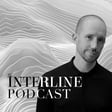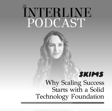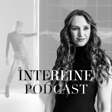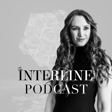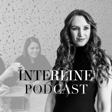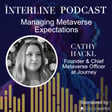Become a Creator today!Start creating today - Share your story with the world!
Start for free
00:00:00
00:00:01

Why PLM Matters More Than Ever, With Mark Harrop
Emma chats to Mark Harrop, Founder and CEO at WhichPLM, who has helped brands, retailers, and manufacturers make intelligent investments in technology and smart choices for process change for over five decades.
Together, they run down the definition of product lifecycle management (PLM), the journey of technology in fashion over Mark's long career, and PLM's place at the centre of both the near-term and the longer-term future of fashion.
Transcript
Fashion Tech Accessibility
00:00:17
Speaker
In the early days, if you imagine a pyramid, you would be selling to the top of that pyramid, those large international brands that I could afford it. But now, it's it's throughout the entire pyramid. Everybody's involved, whether you're a you know small boutique starter or whether you're the biggest company in the world. PLM is extremely important.
00:00:43
Speaker
On today's episode of the Interline Podcast, I'm talking to Mark Harrop, founder and CEO of WitchPLM, who started his career in fashion in 1974 in the cutting room of the Manchester-based clothing business Lortex. Here, he spent 11 years working his way up to cutting room manager, work study engineer, and eventually production director. During his career, he has focused on production management and has spearheaded various technological projects but introduced a range of design and development CAD and CAM systems, NC cutting and other transformation projects across the industry.
The Evolution of PLM Solutions
00:01:21
Speaker
In the late 90s he played a major role in bringing the world's first product lifecycle management or PLM solution to market. I wanted to talk to Mark because the PLM sector has changed in recent years, especially in the SME market.
00:01:36
Speaker
and platforms, tools, and processes that used to be ring fenced off for the largest companies are now available for everyone, putting the idea of true data centralization within everyone's reach. With so much happening across sustainability, digital product creation, AI, new models of retail, deep changes in the landscape of sourcing and production, and much more, I wanted to get a feel for PLM's foundational place in both the near term and the longer term future of fashion.
00:02:06
Speaker
over now to my conversation with Mark. I want to start out, can you tell us a little bit about your career and your history and fashion and footwear and what in particular drew you to the technology side of the industry? So I started in the clothing industry back in 1974, some 50 years ago. And back in those days,
00:02:32
Speaker
Manchester was full of clothing factories and you you you could start a job on a Monday and leave on a Friday and find a new job the following following week. We had so much of an industry here. So I went into the cutting room and started working there and learning all the different jobs within that cutting room. from the After that I left the cutting room and went into work-study engineering where I was looking at methods, how people work, and time in motion. That then, a couple of years later, led me into production management. I was using those that that knowledge from that I brought from the cutting room, which was not just cutting, it was design and development, and then the work-study side, which was method and machinery.
00:03:32
Speaker
And I took that into production into that role and then started to, I don't know, it was very much engineering, you know, it was about how do we use new methods, new systems, new rail systems, new ways of moving production through the factories faster.
Challenges of Paper-Based Systems
00:03:57
Speaker
um I did that for a couple of years and then I was promoted to factory manager. The difference between a production manager and a factory manager means that factory manager, you run the entire factory, you know, from the boil house, cutting room to the warehouse to stop going out. um And that was it. That was 11 years between cutting room to factory manager. And I then decided to pivot, you know, because I was thinking that it was time for something new. um Back in those days, by the way, in in the mid-1970s, the only computerization we had was a large, mid-range computers. And these were located in the factory in air-conditioned rooms.
00:04:52
Speaker
I used to say that they were the private domain of the IT department. And in there, we never really got to see them. It was just the IT t geeks who who looked after that. And they managed what was then the transactional business. So that was invoicing and payroll primarily. It was just those two things. All the rest of the factory what I call the non-transactional processes where you've got CAD systems and CAM systems for designing and developing product and pattern making and grading. They were, in those days, either manual or on larger computers, not our personal computers of today.
00:05:50
Speaker
Another thing I think is important to say, you know, back in my career is let's keep in mind, there was no offshore in the 1970s. It was all onshore. It was all here in, like I said, in Manchester, in the UK. The printers, the dyers, the embroiderers, the trim suppliers, everything was located onshore.
00:06:18
Speaker
The only thing we did is drive to places to get components material and so on. And the management process, was it was paper-based. It was literally on notepads back then and carbon copies. These were duplicate sheets, so you'd write on the top of ah of the paper.
00:06:42
Speaker
um your instructions, what you wanted and so on. And then that left a carbon copy and you pass that paper to somebody. So that was in ah in effect, that was your of data being moved from a one person to another. And you can imagine back then it was prone with errors. The paper was blurry. People, you know, let's be honest, people, their handwriting wasn't good or the spelling wasn't good. um And it was incomplete. It was always incomplete. We were always running around, phoning people, asking, you know, is this, is this correct or whatever? So you can imagine that was, it was rife with mistakes. And when you're employing back then in our factory, we employed 1300 people. So you can imagine for me, how frustrating it was to try and manage
00:07:38
Speaker
a factory of that size on a paper-based system. It was pretty horrendous. So, what that did, it pivoted me away. I started to look for new new things and explore and research and I started to look at the, you know, back then again, no internet So you had to go to the libraries, go to the universities and so on, find out what was was going on in research. And actually that led me to a company called Microdynamics, a CAD-CAM supplier in the US, in Texas actually. And they were using the first computer system. So the IBM XT it was, with those five and a quarter inch floppy disk and a 10 megabyte
Impact of Technology on Fashion
00:08:30
Speaker
hard drive. That that was it.
00:08:32
Speaker
And that led me and pivoted my world from, you know, manual to tech. And that got me into the CAD market. And would you say that from what you've seen over the past, I think it's over 20 years in the industry, has the picture of technology changed and has it been a net positive or is it more nuanced than that? I mean,
00:08:59
Speaker
Undoubtedly, you know tech has reshaped the industry from those yeah You think about what I said before I said 74 to you know the the mid-1980s We moved we transitioned To a faster paced Business model we started to ingest these new technologies. And for me, they've completely as I said, they've completely reshaped the fashion industry and for the better. And if you go all the way to where we are today, we've got a very, very fast paced
00:09:50
Speaker
diverse global connected industry that's created a ton of new opportunities and efficiencies that stretch way beyond the the brand's domain. you know It's now feeding the downstream all the way to the consumer and feeding the upstream through those value chain partners. And of course, in in more recent times, we've seen this further and powered by AI. Having said all that, I think there is this word of caution.
00:10:30
Speaker
Tech, for me, when I look back now, it can be a double-edged sword. you know If we take, for example, one one sector of the fashion industry, we take fast fashion.
00:10:42
Speaker
It relies heavily on technology. In fact, it probably relies more on technology than, honestly, creativity and so on. But that for me has led to environmental issues. um It's led to poor quality of product and even Beyond that has led to legal concerns and and frankly consumer fatigue.
Understanding PLM
00:11:09
Speaker
So the key challenge for fashion now is how do we use technology responsibly to promote creativity, do smarter development and manufacturing transparency across the value chain.
00:11:27
Speaker
Yeah, absolutely. I see, I see both sides of that. Um, and I guess they just have developed in tandem and hopefully the one can take over the other eventually. Um, now that brings me to how we are operating in 2024. Um, there are a lot of different definitions of what product lifestyle management, sorry, product life cycle management actually means.
00:11:55
Speaker
across both the software part and the process part. Some of them contradict each other, some of them compliment each other, but it feels like there's an ever-changing window of what the acronym stands for. So today, what what's your working definition of PLM? You know, thinking about that question, i it takes me back to the late 90s. I was one of the team members that introduced the world's first product data management system. And then back in the late 90s, between 1999 and 2003, we built the first fashion PLM system on the internet. So I think that gives me some <unk> know if you like entitlement to say what what I feel it is.
00:12:52
Speaker
I've been asked this question hundreds of times over the last 25 years of product lifecycle management. But for me, I'd like to get this across, PLM isn't software. In my opinion, PLM is a methodology, first and foremost. So it's not just a piece of software. It is software. But number one, it's a methodology. It's the method of managing people, processes, and product throughout the entire life cycle. And it also manages that original PDM data. that's PDM was the system before PLM, product data management that we used. And that was all about data. Now, PLM,
00:13:53
Speaker
uses product data management to move data throughout the end-to-end value chain. Or at least that that's the goal to run from the beginning to the very end. It's if you like your digital threat. It also, and PLM for me is the automation engine. You know, it's something that it ingest data, it pulls it in, but it equally pushes it out and it's your collaboration and decision-making tool. Your Slack if you like or WhatsApp of the modern world, it allows you to collaborate with all those partners.
00:14:40
Speaker
Keep in mind what I said earlier, when I was in in my factory days, we had to use pieces of paper to communicate and telephone calls where I was talking to a material supplier or a dyer or trim supplier and such. Whereas today we can communicate in real time right across that globe and that's what PLM enables. So yes,
00:15:04
Speaker
It's number one, a methodology, but it's also a piece of software. And that's an important part of this technology ecosystem that, as I said, ingest and shares data throughout the entire chain. Also based on what we spoke about a bit earlier with fast fashion and how things have changed. um How important do you think PLM is to where the fashion industry is headed?
00:15:34
Speaker
How can it maybe mitigate some of the problems that we've discussed? And how do you think that external forces and market dynamics are influencing the direction of PLM? Is it still as important today as ah software and a methodology? and Is it as important today as it was maybe you know a few years ago? Where is it heading at the moment? PLM is in fact more important today than it ever has been.
00:16:04
Speaker
And you know, when I think about PLM in the early days, we would, if you imagine a pyramid, we would be selling to the top of that pyramid, those large international brands that could afford it. But now it's it's throughout the entire pyramid. Everybody's involved, whether you're a you know a small boutique startup,
00:16:26
Speaker
or whether you're the biggest company in the world. PLM is extremely important to the entire value chain. And and for why? Because it it's it streamlines processes. It's continuously helping to reduce that product design and and development um cycle.
00:16:49
Speaker
it's It's also enabling um new processes today. It's improving traceability. People talk about you where are my products? Can I prove it was made here or there? And where's this material coming from? Do I really trust that that material came from that location?
00:17:08
Speaker
is Is it the real thing and so on? So that improving traceability and and providing the accurate decision making is what PLM is enabling. it's As we just touched on before in your last question, it's helping to enhance further the collaboration.
00:17:27
Speaker
It's connecting other the systems within the ecosystem because PLM, by the way, in my opinion, is is a piece of the ecosystem. it's It's a piece of this fashion universe. It's not the be all and end all. It's not this silver bullet that solves all your problems. it It's a piece. It's an important piece, but nevertheless, it's a piece. So it connects trend.
Digital Fashion Ecosystems
00:17:51
Speaker
It's connecting planning systems, it's connecting design and sourcing and production teams globally, but in real time, or to be honest and very clear, more near time information. So it's optimizing costs, it's tracking materials, the bill of materials.
00:18:13
Speaker
It's now enabling and and a new process that we call the Bill of Process. So you've got your materials, how do you process them? um So it's helping on that side. It's helping on the Bill of Labor. How much labor does it take to make this product? So that we end and up with products that have a you know very clear and up front pricing strategies.
00:18:43
Speaker
And of course, more recently, um it's promoting sustainability. It's managing those materials and those processes and helping us to measure the impact of those materials and processes so that we can report back on our sustainability requirements. Absolutely. And this kind of leads into my next question. You've mentioned it already. I think sustainability is one of the core focuses that PLM can assist with today. If you were designing a new fashion solution focused on the core competencies of product design and development, what would it cover? um What do you consider to be the essential capabilities that make a successful platform? And would PLM still even be the right label for it? Yeah, great question.
00:19:38
Speaker
Yes, PLM would be the right label. but As I've just alluded to, I don't think it's the only label within the solutions solution stack. For me, the solution stack, if I was building a new system today, I would i'd rather call it ah you know the fashion ecosystem. And in my fashion ecosystem, I would have solutions that support trend, that support trend analysis.
00:20:12
Speaker
I would have solutions that support the design creation, storyboarding, that storyboarding narrative. What is it that we want to to build um um and and what what does the consumer want from it? What does it look like? What are the inspirations? I would have a digital thread through to the CAD systems and Let me define CAD systems because it people think of CAD as engineering, whereas CAD is computer-aided design. So it's that design piece first. And then we have the camera side, computer-aided manufacturing. So that's the grading of pattern pieces.
00:20:58
Speaker
the engineering of patent pieces, the markers, the NC numerically controlled cutting files. So I have those in that digital thread of that that ecosystem. Planning systems
00:21:12
Speaker
Again, this is often mistaken. We have merchandise planning systems that talk about, that manage the financials. You know, what is it we we want to achieve this year? What's the budget plan? What, how does that break down into products and so on? But also, how do we plan materials and colours and so on? So planning is ah is is a big ecosystem in in its own sense. Then we have PLM.
00:21:41
Speaker
Once we have the trend of the story, the planning requirements, we put that into a PLM system that helps to build that technical detail specification with all its approvals and so on. We have a colour management ecosystem. um We have the digital product creation tools, we have testing, we have labour systems, packaging, label, certification systems, and then of course marketing.
00:22:08
Speaker
and product information management, which goes into marketing and ultimately e-commerce. And that's not, remember, everything I've said so far are non-transaction. We've not got to invoicing apart from the touching on e-commerce. So for me, that's the future. The future is a fashion ecosystem with a digital thread that connects all of those solutions.
00:22:33
Speaker
Right, absolutely. So as you know at the Interline we're really about practical steps and what you've mentioned here is definitely feeding into that. If we think of a brand who's at the lower end of the market spectrum where an accessible PLM solution, kind of like one you've just been describing, could add a lot of value to help them achieve some of the essential things that a system could really help to optimize with.
00:23:03
Speaker
What kind of talent do you think they need to have in-house to take advantage of a PLM solution? Do they need a dedicated tech team? Who would be the one or the team to run such, I don't know, such um systems or processes or technologies? Well, the great news on that count is we don't need the people we needed back 25 years ago when we invented PLM. In those days, we needed system architects, we needed IT t teams, we needed process champions, we needed a change management teams. It was huge. ah the The services that we required for PLM,
00:23:58
Speaker
Even 10 years ago, um we still needed quite a lot of people in involved. But the exciting future is, and right now, by the way, it's not just, it's not a future, it's here. We don't need those teams anymore. A small to medium sized brand, and I emphasize the small, can absolutely use PLM today.
00:24:28
Speaker
You know, that cloud these cloud-based PLM solutions have lowered the cost dramatically. And they've also lowered those barriers of entry so that these small brands can now access the features that were previously, you know, only available for the large enterprise businesses around the world. However, you know, back to you your main point, there are some technical expertise that are still needed to fully and utilize a PLM system effectively.
00:25:06
Speaker
For me, you you still require at least somebody nominated to become this process champion in in a small company who understands how this PLM system works and who can be that liaison between the small business and your PLM provider and provide um work with them and understand you know how it works and how you might configure it a little bit to suit what what it is you do, your unique requirements in your business. But apart from that, no, we don't need those IT people anymore because it's cloud-based. Upgrades are being done on the cloud. we We don't have the technology patches that we used to have to put in.
00:25:52
Speaker
We had to stop everything and bring the IT team involved. We don't need that anymore. So it's now much easier. And as I've said, um it's an absolute necessity in my opinion for these small brands. For sure. I think you probably need somebody who understands some technical sides, but also the bigger picture. And that's what I want to talk about now. I think a brand of any size needs to understand what's at the heart of PLM, which is critical product data. And there's a huge demand for different initiatives and ideas to pull from and push to ah that kind of data today.
Future of PLM and AI Integration
00:26:33
Speaker
How do you think that PLM can support the three main pillars of digital transformation at the moment, which are AI sustainability and 3D digital product creation? um What do you think of that?
00:26:48
Speaker
Well, PLM, as I've said, is it part of this you know fashion ecosystem. it It is the central hub, if you like, for data.
00:27:05
Speaker
How can PLM support AI sustainability in DPC? And you know you may have noticed I said DPC. I didn't say 3D. I'm going to go into that. I want to answer that in in a new way if if you don't mind as I come into this. First up, AI now
00:27:35
Speaker
the value chain or can do, I should say. um It can identify trends and in in minutes and seconds. um it's If we use AI smartly, we can create new models that will support design teams to create and new ideations, new creations in photorealistic output. So giving you photographs almost of product It's optimising and analysing data to help understand what the price points should be and it's predicting, it's capable of predicting consumer preferences. Let me talk about sustainability a little bit. Sustainability tracking.
00:28:31
Speaker
We now have the ability to connect, as I've said, material, the bill of materials, so the material usage, the manufacturing processes of those materials, and as they come into products, ah we have the ability to connect to our value stream partners, machinery. If we want we can go right down to this particular machine uses this amount of electricity or this amount of ah gas or this amount of um water to deliver the the process.
00:29:18
Speaker
With all that, we can accurately measure that carbon footprint today, even if a piece of material, you know, so a meter square of a piece of material, all the product, so we can support, you know, the ethical, think our ethical responsibilities as we move forward. Now on that final point of the question, 3D, I'm going to now set 3D product creation of 3D DPC. I feel we we are at a,
00:29:51
Speaker
another new chapter is arising. In fact, it's a right it's it's already here, it's started.
00:30:00
Speaker
When we brought 3D in, we brought 3D in in the 1980s in Footwork. In 1985, Microdynamics, a company I worked for,
00:30:12
Speaker
that I'd left manufacturing to work for. We had a 3D footwear solution back then that was doing not just 3D engineering, but 3D graphic designs and so on. And then in the late 90s, we saw Apollo 3D systems coming into play. So they've already been here for 25 years.
00:30:35
Speaker
But we're now and ah at a point where I see our the the industry pivoting, or or I would call it leapfrog. We have a leapfrog coming our way. And what I mean by that, we're seeing these AI models that are now capable of creating, taking two-dimensional images to a front view, a back view, a side view.
00:30:59
Speaker
and texture mapping to that 2D image and creating photorealistic images. so So they can ingest trend, they can ingest digital materials, they can ingest styling details and produce those photographs in in seconds. Now they are
00:31:26
Speaker
They appear 3D. Because if you think about an e-commerce site, you're looking at an image, you're looking at a flat image, you're not turning a body around, you're looking at a flat image to your x3 dimension. We call that in the industry 2.5D, 2.5D. So we can do that. So my question to all of us now is, do we really need 3D for e-commerce? Probably not. Do we need 3D for some form of engineering?
00:31:56
Speaker
Yes, still, but it's ta three it's now DPC becoming its own broader ecosystem than just 3D. And I can see this going further as we As AI continues to accelerate by the month, not by the year, by the month, we can already take that that text prompt, that request, and ask AI to create short videos that we can use on our e-commerce engines or that we can use with our own teams to share what it is we want.
00:32:32
Speaker
that we're thinking to to produce. So I think those those are my answers. i AI will empower all of the systems that we've talked about in in this conversation so far. I think it will mean enable sustainability as we've we we should be aiming for. And digital product creation will deliver lots of things. And I think 3D is just one piece of a much bigger picture as we move forward. Yeah, absolutely. That makes a lot of sense. And we've kind of spoken about the future already and these three critical things of AI and sustainability and DPC, which are really
00:33:19
Speaker
core components of the fashion industry going forward. Do you see anything else in PLM's future? Do you think that we'll see PLM platforms extending their footprints to cover new areas? um Or do you think that um the key is going to be focusing in on what PLM does best? I think for me, I think PLM now needs to
00:33:52
Speaker
to integrate deeper into this into the fashion ecosystem. A message to the PLM vendors that might listen to this podcast would be, don't try and do everything in PLM. You're not a 3D DPC tool. You are not a color management tool. You are not truly a a a planning tool that is driven by algorithms. You are not the e-commerce engine. Your PLM system covers part of that fashion ecosystem, but it now needs to think carefully about how it integrates two trends, two design, two storyboards, to all of the systems that we've talked about during this during our conversation.
00:34:49
Speaker
on and it it it needs to
00:34:55
Speaker
I guess do more work. needs There's a lot more effort required on the upstream value chain. So manufacturing, the factories, the mills, the trim suppliers, the component suppliers, it needs to go further up the value chain and get deeper into these organizations. So it can continue to weave this digital thread throughout the a ecosystem. And I think the other,
00:35:25
Speaker
a major thing that I've already started to see, and it's coming from the smaller, the new PLM vendors that are coming in to support this these SMEs, and that is AI powered automation.
00:35:43
Speaker
If you think about what PLM is, remember, I've said in the heart of PLM, you've got product data management. Therefore, you've got data. If you've got data, what does AI feed off? It feeds off data. It uses data to generate processes and tasks, and it massively improves the efficiency.
00:36:05
Speaker
um If we agree that AI is about a thousand times smarter than your average human, then just imagine the ability to link AI as a foundation piece of PLM into this engine to be a thousand times faster, a thousand times smarter.
00:36:29
Speaker
at making more accurate decisions.
Closing Remarks on PLM's Future
00:36:32
Speaker
So it's going to use that micro data driven future to create newness and and give us accuracy of those decisions. Well, I think we'll be watching what happens. Like you said, everything's changing so quickly. But um I think there's such a solid and vital place for PLM.
00:36:55
Speaker
for all fashion companies going forward and we'll wait and see what happens. um But Mark, it's been such a pleasure having you here on the show today. Thank you for sharing your insights. I know they're going to be valuable for the Interlions audience. So thank you very much and hope we can chat again to you soon. My pleasure. I really hope you enjoyed this episode with Mark Harrop. Make sure to follow him on LinkedIn.
00:37:20
Speaker
to stay updated on the latest in PLM, as well as what's going on in the broader fashion technology sector. There are many more exciting guests in our podcast pipeline, so make sure you don't miss an episode. Subscribe to the Interline podcast wherever you listen to podcasts and give us a follow on LinkedIn and Instagram. In addition to this, make sure you subscribe to our weekly newsletter, where we give you our analysis into the biggest stories of the week in the world of fashion technology. I work on those weekly breakdowns with the rest of my team here at the Interline,
00:37:49
Speaker
and we put a lot of thought in each week into not just capturing the headlines, but really analyzing them. Thanks for listening. See you soon.

